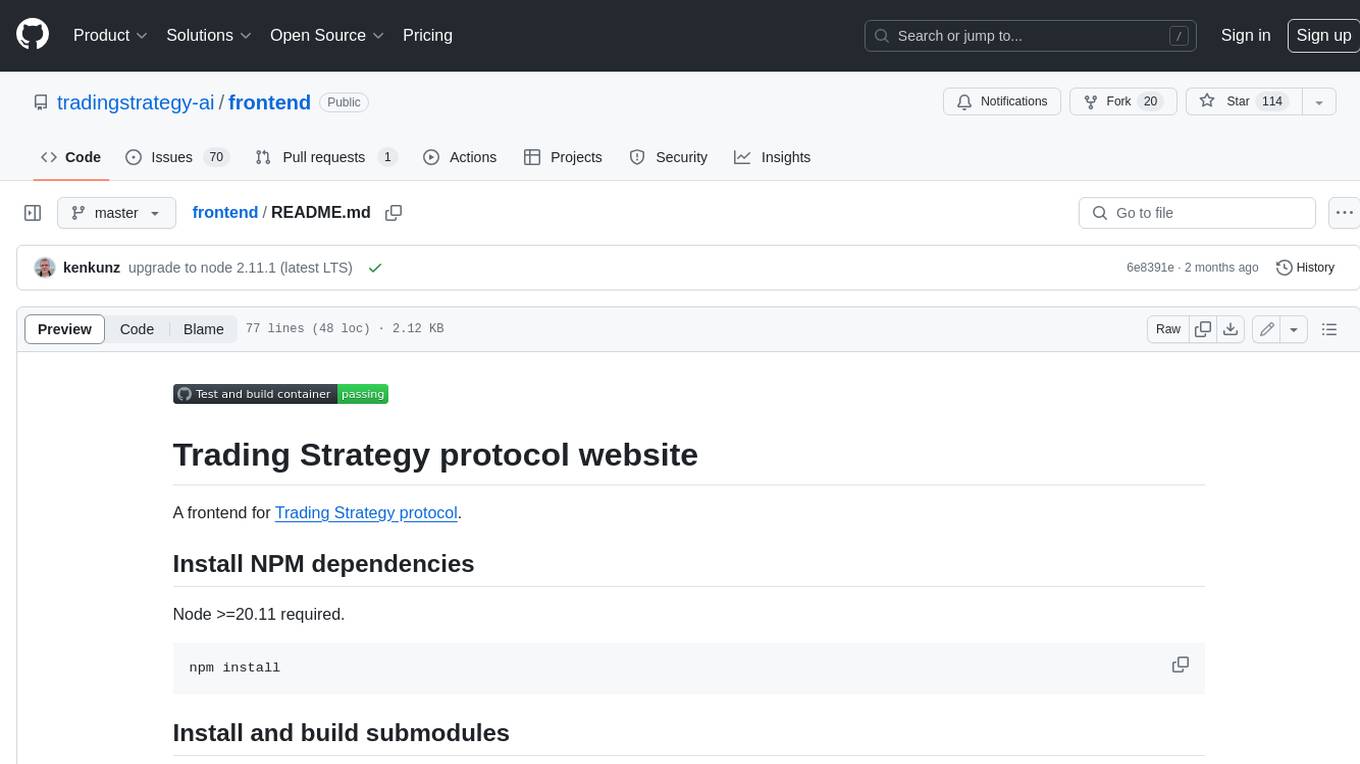
model_baseline
Testing baseline LLMs performance across various models
Stars: 232

This repository contains code for testing model baselines on ARC-AGI tasks. Users can test model baselines on ARC-AGI-1 and ARC-AGI-2 tasks, run single tasks, run tasks with concurrency, score submissions, and view historical results. Contributors can add more model adapters to the `src/adapters` folder. The repository also provides CLI usage for validation, uploading model outputs, bulk uploading, and Hugging Face integration for model submissions. Contributors can test new providers using the `test_providers.sh` script before submitting pull requests.
README:
This repo contains code for testing model baselines on ARC-AGI. The input data is a folder containing individual files for ARC-AGI tasks.
git clone https://github.com/arcprizeorg/model_baseline.git
git submodule update --init
pip install -r requirements.txt
The task format for ARC-AGI-1 and ARC-AGI-2 are identical. You can point this testing hardness towards ARC-AGI-2 via the --data_dir parameter. When running with concurrency, ensure you're using the correct <task_list>.txt found in data/task_lists/ for the set you're testing.
To test a single task, run:
python3 -m main --data_dir data/arc-agi/data/evaluation --config claude_sonnet--task_id 0a1d4ef5 --print_logs
Use the optional parameters to save and print the submission:
python3 -m main --data_dir data/arc-agi/data/evaluation --config claude_sonnet --task_id {} --save_submission_dir submissions/claude_sonnet_20241022 --print_logs
This will write one <id>.json file per task.
Testing multiple tasks in a single run can be slow. You can use the your parallel technique of choice to speed this up.
For example with the parallel command:
brew install parallel
parallel --jobs 20 --progress python3 -m main --data_dir data/arc-agi/data/evaluation --config claude_sonnet --task_id {} --save_submission_dir submissions/claude_sonnet_20241022 --print_logs :::: ./data/task_lists/public_evaluation_v1.txt
Note: In order to use parllel you'll need a list of task ids. generate_tasks_list.py helps with this. Public data task ids are already supplied.
python3 -m src.utils.generate_tasks_list --task_dir data/arc-agi/data/training --output_file data/task_lists/public_training
You can score your submissions by pointing the scoring script at your submissions directory:
python3 -m src.scoring.scoring --task_dir data/arc-agi/data/evaluation --submission_dir submissions/claude_sonnet_20241022 --print_logs --results_dir results/claude_sonnet_20241022
Note: You'll also need to tell the script which task set to score.
Results are stored in the results folder. You can view historical results for models here.
This repo is welcome to contributions!
Specifically, we would love help adding more model adapters to the src/adapters folder.
More will get added by the ARC-AGI team, but we'll also gladly accept contributions from the community.
For more information visit the ARC Prize.
Validate model outputs against task sets:
# Basic validation
python cli/main.py validate data/arc-agi/data/evaluation submissions/open_ai_o1_high_20241217
# Validate another model's outputs
python cli/main.py validate data/arc-agi/data/evaluation submissions/claude_sonnet_20241022Upload a single model's outputs to a task set repository:
# Basic upload (private repository)
python cli/main.py upload submissions/open_ai_o1_high_20241217 --task-set public_eval_v1
# Upload to a different organization
python cli/main.py upload submissions/claude_sonnet_20241022 --task-set public_eval_v1 --org your-org-name
# Create a public repository
python cli/main.py upload submissions/deepseek_v3 --task-set public_eval_v1 --publicUpload multiple model outputs at once:
# Upload all models in submissions directory (private repository)
python cli/main.py bulk-upload submissions/ --task-set public_eval_v1
# Upload to a different organization
python cli/main.py bulk-upload submissions/ --task-set public_eval_v1 --org your-org-name
# Create a public repository
python cli/main.py bulk-upload submissions/ --task-set public_eval_v1 --publicNotes:
- All uploads create private repositories by default
- Use
--publicflag to create public repositories - Files are uploaded to subdirectories matching model names
- Default organization is "arcprize"
Before uploading, you'll need to authenticate with Hugging Face:
- Get your access token from https://huggingface.co/settings/tokens
- Set up authentication using either method:
# Option 1: Environment variable export HUGGING_FACE_HUB_TOKEN=your_token_here # Option 2: CLI login huggingface-cli login
The upload process organizes submissions by task sets. Each task set (e.g., public_eval_v1) becomes a separate dataset repository on Hugging Face, with model submissions organized in subdirectories.
Structure:
task_set_name/
├── model_name_1/
│ ├── result1.json
│ ├── result2.json
├── model_name_2/
│ ├── result1.json
│ └── result2.json
To upload model outputs:
python cli/main.py upload submissions/model_name --task-set task_set_name [--org organization] [--public]For example:
python cli/main.py upload submissions/open_ai_o1_high_20241217 --task-set public_eval_v1To upload multiple model outputs at once:
python cli/main.py bulk-upload submissions/ --task-set task_set_name [--org organization] [--public]For contributors implementing new providers, we provide a streamlined way to validate your implementation using the test_providers.sh script. This script helps ensure your provider implementation works correctly with the ARC-AGI tasks before submitting a pull request.
# Run all provider tests
./test_providers.sh
# The script will test multiple provider/model combinations in parallel
# Each test will:
# 1. Run a specific task for each provider/model
# 2. Save the output
# 3. Report success/failureThe tests ensure that:
- The provider can successfully connect to its API
- The model can process ARC-AGI tasks
- The output matches the expected format
- The provider correctly handles token usage and costs
You can test the same model with different configurations by using the --config parameter:
# Test a model with a specific configuration
python3 -m main --data_dir data/arc-agi/data/evaluation --config claude_sonnet --task_id sample_task_id --print_logsThe test_providers.sh script includes examples of testing the same model with different configurations, such as:
-
openai o1 0b17323b high_temp- Testing o1 with high temperature -
openai o1 0b17323b low_temp- Testing o1 with low temperature
New models are defined in src/models.yml. Each model requires:
models:
- name: "model_config_name" # A unique identifier for this model configuration
model_name: "actual-model-name" # The actual model name used by the provider's API
provider: "provider-name"
max_tokens: 4024 # or appropriate limit
temperature: 0.0 # optional
pricing:
date: "YYYY-MM-DD"
input: 0.00 # Cost per 1M input tokens
output: 0.00 # Cost per 1M output tokensIn models.yml, you can create multiple configurations for the same underlying model by defining separate entries with different name values but the same model_name:
models:
# Configuration for short responses
- name: "o1_short_response"
model_name: "o1"
provider: "openai"
max_completion_tokens: 1024 # Shorter response limit
pricing:
date: "2025-02-23"
input: 15.00
output: 60.00
# Configuration for long responses
- name: "o1_long_response"
model_name: "o1"
provider: "openai"
max_completion_tokens: 4024 # Longer response limit
pricing:
date: "2025-02-23"
input: 15.00
output: 60.00When running the model, you specify the configuration name as the model parameter:
# Run with short response configuration
python3 -m main --config o1_short_response --task_id sample_task_id
# Run with long response configuration
python3 -m main --config o1_long_response --task_id sample_task_idYou can add any model-specific parameters supported by the provider's API:
models:
- name: "gemini_pro"
model_name: "gemini-1.5-pro"
provider: "gemini"
max_output_tokens: 4024 # Provider-specific parameter
temperature: 0.0
pricing:
date: "2025-02-23"
input: 1.25
output: 5.00Note how different providers may use different parameter names (e.g., max_tokens, max_completion_tokens, or max_output_tokens) depending on their API requirements.
When running batch tests with multiple configurations:
# Test with short response configuration
parallel --jobs 20 python3 -m main --data_dir data/arc-agi/data/evaluation --config o1_long_response --task_id {} --save_submission_dir submissions/o1_short :::: ./data/task_lists/public_evaluation_v1.txt
# Test with long response configuration
parallel --jobs 20 python3 -m main --data_dir data/arc-agi/data/evaluation --config o1_long_response --task_id {} --save_submission_dir submissions/o1_long :::: ./data/task_lists/public_evaluation_v1.txtAfter running tests with different configurations, you can compare their performance:
# Score short response configuration
python3 -m src.scoring.scoring --task_dir data/arc-agi/data/evaluation --submission_dir submissions/o1_short --print_logs --results_dir results/o1_short
# Score long response configuration
python3 -m src.scoring.scoring --task_dir data/arc-agi/data/evaluation --submission_dir submissions/o1_long --print_logs --results_dir results/o1_longThis allows you to systematically evaluate how different parameter settings affect model performance on ARC-AGI tasks.
-
Create a new file in
src/adapters/(e.g.,my_provider.py) -
Implement the
ProviderAdapterclass:from .provider import ProviderAdapter class MyProviderAdapter(ProviderAdapter): def init_client(self): # Initialize API client pass def make_prediction(self, prompt: str) -> Attempt: # Make prediction and return standardized Attempt object pass def chat_completion(self, messages: str) -> str: # Handle chat completion pass
-
Key requirements:
- Handle authentication (typically via environment variables)
- Implement proper error handling
- Convert provider-specific responses to standardized formats
- Track and report token usage and costs
- Add test cases to
test_providers.sh - Test with sample tasks:
python3 -m main --data_dir data/arc-agi/data/evaluation --provider new_provider --model new_model --task_id sample_task_id --print_logs
Remember to:
- Follow the existing patterns in other provider implementations
- Maintain consistent error handling
- Document any provider-specific requirements or limitations
- Update tests to cover the new provider
For Tasks:
Click tags to check more tools for each tasksFor Jobs:
Alternative AI tools for model_baseline
Similar Open Source Tools

model_baseline
This repository contains code for testing model baselines on ARC-AGI tasks. Users can test model baselines on ARC-AGI-1 and ARC-AGI-2 tasks, run single tasks, run tasks with concurrency, score submissions, and view historical results. Contributors can add more model adapters to the `src/adapters` folder. The repository also provides CLI usage for validation, uploading model outputs, bulk uploading, and Hugging Face integration for model submissions. Contributors can test new providers using the `test_providers.sh` script before submitting pull requests.
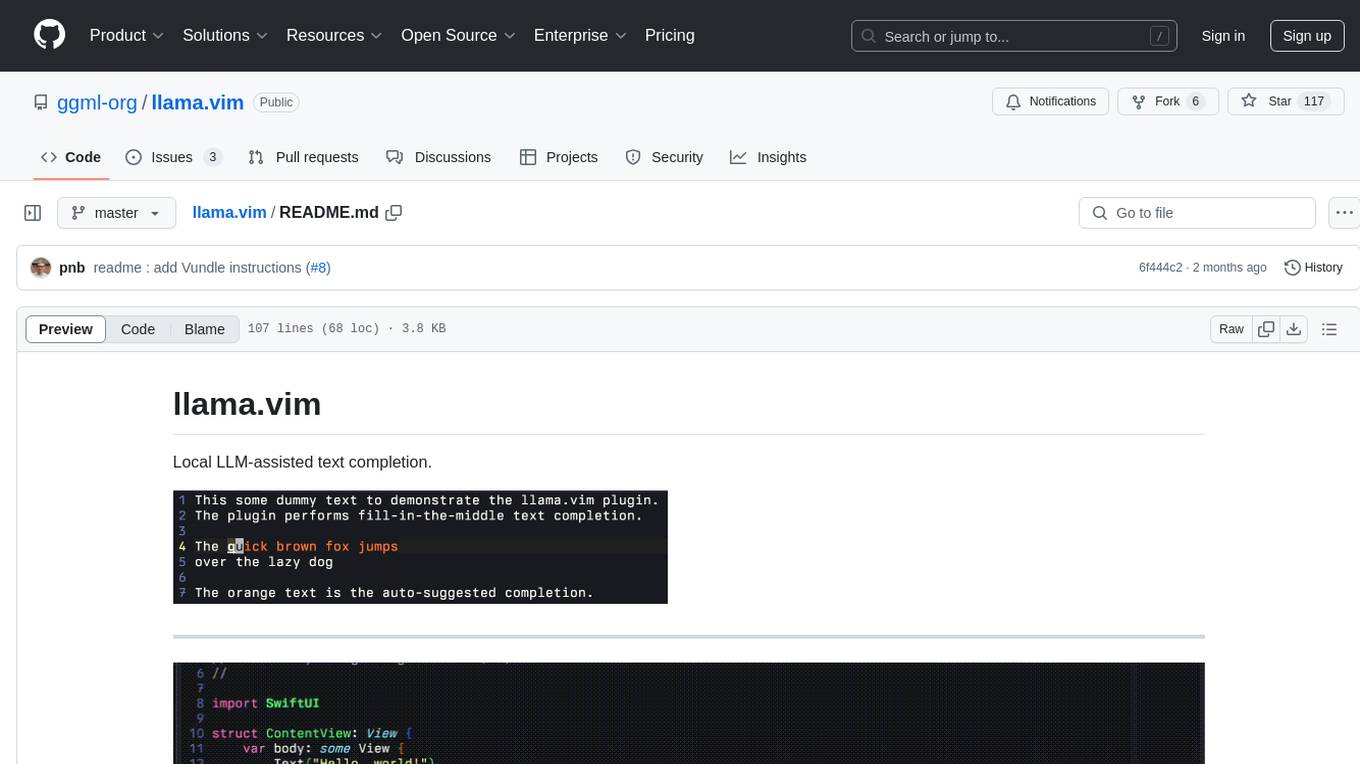
llama.vim
llama.vim is a plugin that provides local LLM-assisted text completion for Vim users. It offers features such as auto-suggest on cursor movement, manual suggestion toggling, suggestion acceptance with Tab and Shift+Tab, control over text generation time, context configuration, ring context with chunks from open and edited files, and performance stats display. The plugin requires a llama.cpp server instance to be running and supports FIM-compatible models. It aims to be simple, lightweight, and provide high-quality and performant local FIM completions even on consumer-grade hardware.

orbit
ORBIT (Open Retrieval-Based Inference Toolkit) is a middleware platform that provides a unified API for AI inference. It acts as a central gateway, allowing you to connect various local and remote AI models with your private data sources like SQL databases, vector stores, and local files. ORBIT uses a flexible adapter architecture to connect your data to AI models, creating specialized 'agents' for specific tasks. It supports scenarios like Knowledge Base Q&A and Chat with Your SQL Database, enabling users to interact with AI models seamlessly. The tool offers a RESTful API for programmatic access and includes features like authentication, API key management, system prompts, health monitoring, and file management. ORBIT is designed to streamline AI inference tasks and facilitate interactions between users and AI models.
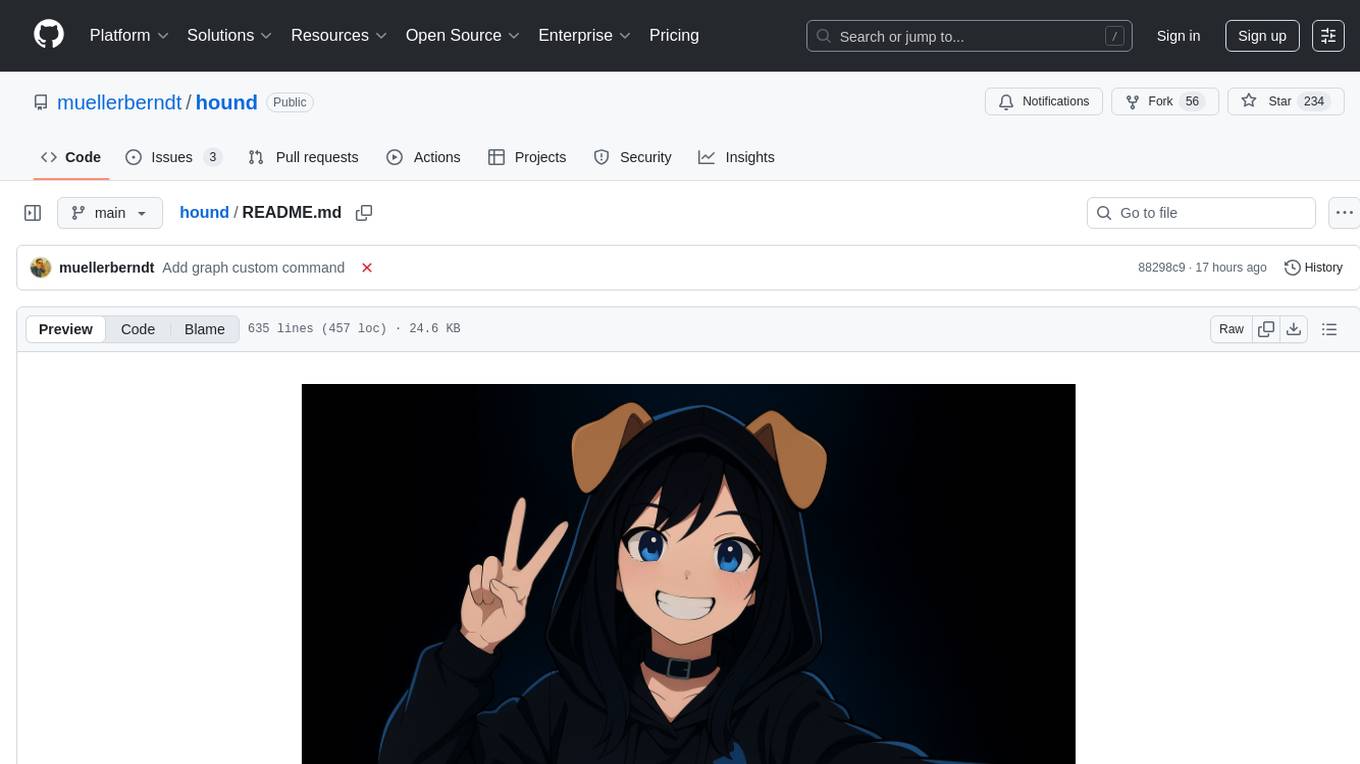
hound
Hound is a security audit automation pipeline for AI-assisted code review that mirrors how expert auditors think, learn, and collaborate. It features graph-driven analysis, sessionized audits, provider-agnostic models, belief system and hypotheses, precise code grounding, and adaptive planning. The system employs a senior/junior auditor pattern where the Scout actively navigates the codebase and annotates knowledge graphs while the Strategist handles high-level planning and vulnerability analysis. Hound is optimized for small-to-medium sized projects like smart contract applications and is language-agnostic.

cursor-talk-to-figma-mcp
This project implements a Model Context Protocol (MCP) integration between Cursor AI and Figma, allowing Cursor to communicate with Figma for reading designs and modifying them programmatically. It provides tools for interacting with Figma such as creating elements, modifying text content, styling, layout & organization, components & styles, export & advanced features, and connection management. The project structure includes a TypeScript MCP server for Figma integration, a Figma plugin for communicating with Cursor, and a WebSocket server for facilitating communication between the MCP server and Figma plugin.
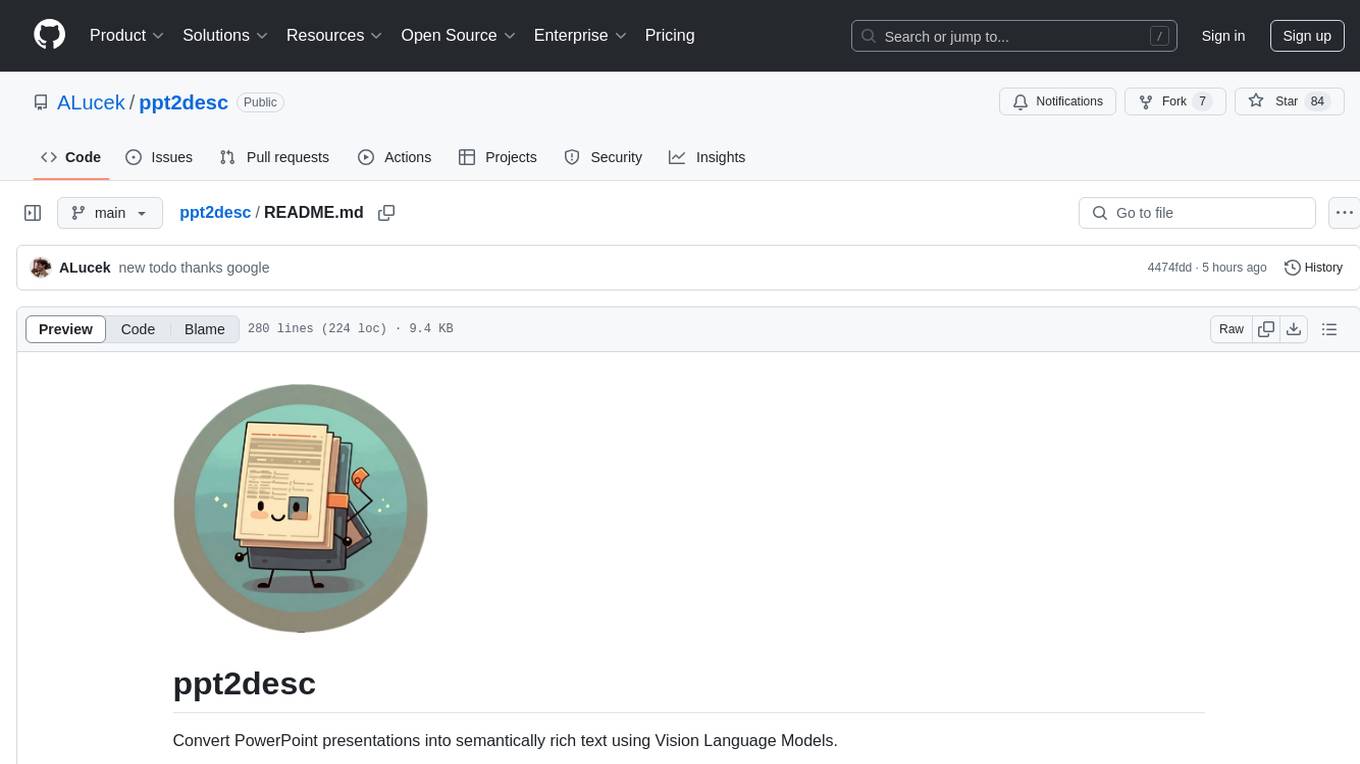
ppt2desc
ppt2desc is a command-line tool that converts PowerPoint presentations into detailed textual descriptions using vision language models. It interprets and describes visual elements, capturing the full semantic meaning of each slide in a machine-readable format. The tool supports various model providers and offers features like converting PPT/PPTX files to semantic descriptions, processing individual files or directories, visual elements interpretation, rate limiting for API calls, customizable prompts, and JSON output format for easy integration.

llm-detect-ai
This repository contains code and configurations for the LLM - Detect AI Generated Text competition. It includes setup instructions for hardware, software, dependencies, and datasets. The training section covers scripts and configurations for training LLM models, DeBERTa ranking models, and an embedding model. Text generation section details fine-tuning LLMs using the CLM objective on the PERSUADE corpus to generate student-like essays.
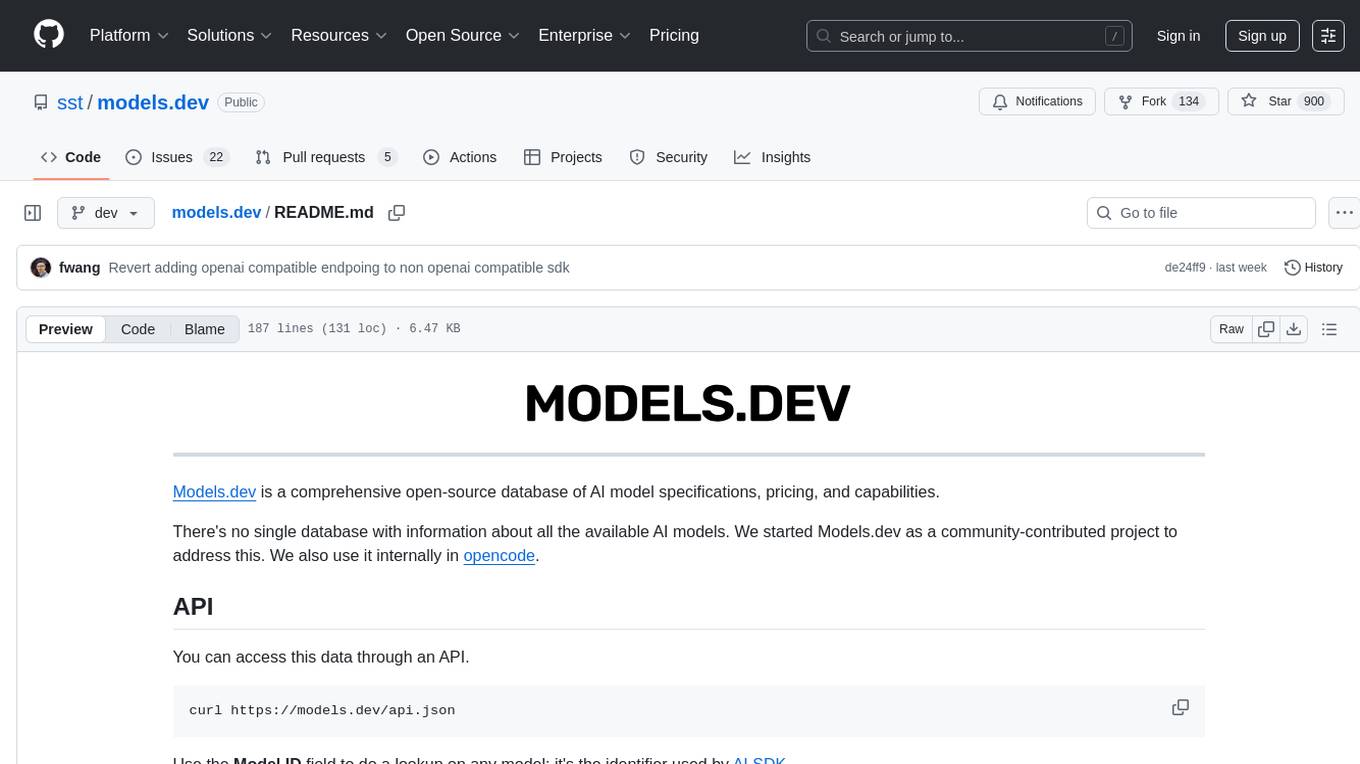
models.dev
Models.dev is an open-source database providing detailed specifications, pricing, and capabilities of various AI models. It serves as a centralized platform for accessing information on AI models, allowing users to contribute and utilize the data through an API. The repository contains data stored in TOML files, organized by provider and model, along with SVG logos. Users can contribute by adding new models following specific guidelines and submitting pull requests for validation. The project aims to maintain an up-to-date and comprehensive database of AI model information.
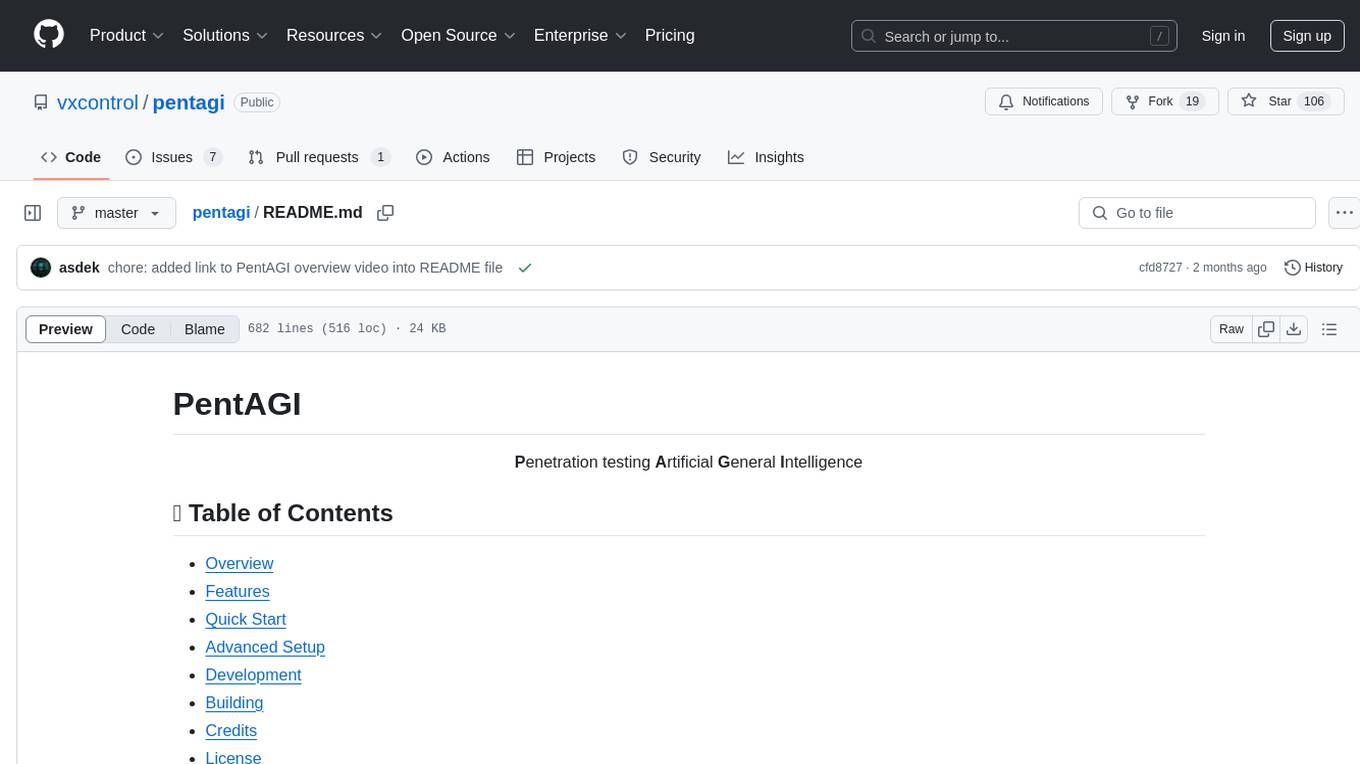
pentagi
PentAGI is an innovative tool for automated security testing that leverages cutting-edge artificial intelligence technologies. It is designed for information security professionals, researchers, and enthusiasts who need a powerful and flexible solution for conducting penetration tests. The tool provides secure and isolated operations in a sandboxed Docker environment, fully autonomous AI-powered agent for penetration testing steps, a suite of 20+ professional security tools, smart memory system for storing research results, web intelligence for gathering information, integration with external search systems, team delegation system, comprehensive monitoring and reporting, modern interface, API integration, persistent storage, scalable architecture, self-hosted solution, flexible authentication, and quick deployment through Docker Compose.
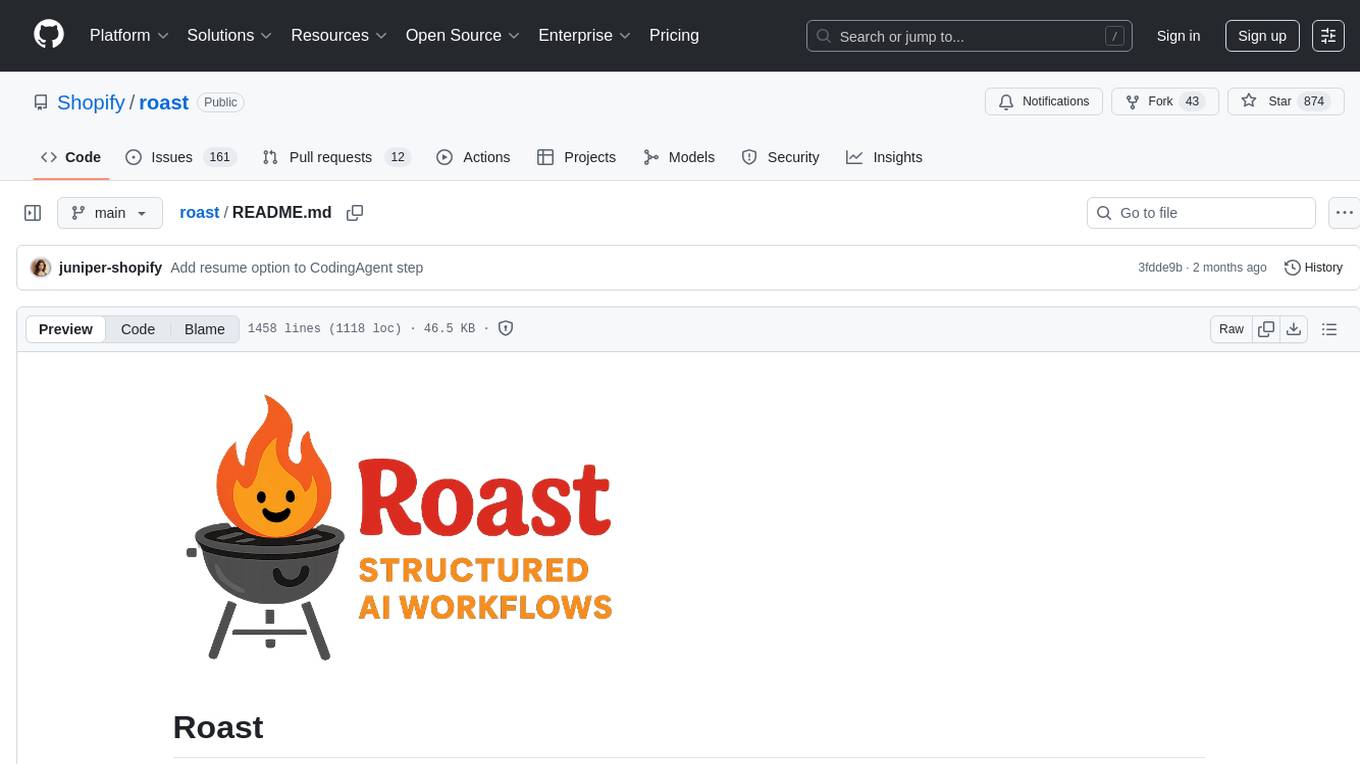
roast
Roast is a convention-oriented framework for creating structured AI workflows maintained by the Augmented Engineering team at Shopify. It provides a structured, declarative approach to building AI workflows with convention over configuration, built-in tools for file operations, search, and AI interactions, Ruby integration for custom steps, shared context between steps, step customization with AI models and parameters, session replay, parallel execution, function caching, and extensive instrumentation for monitoring workflow execution, AI calls, and tool usage.
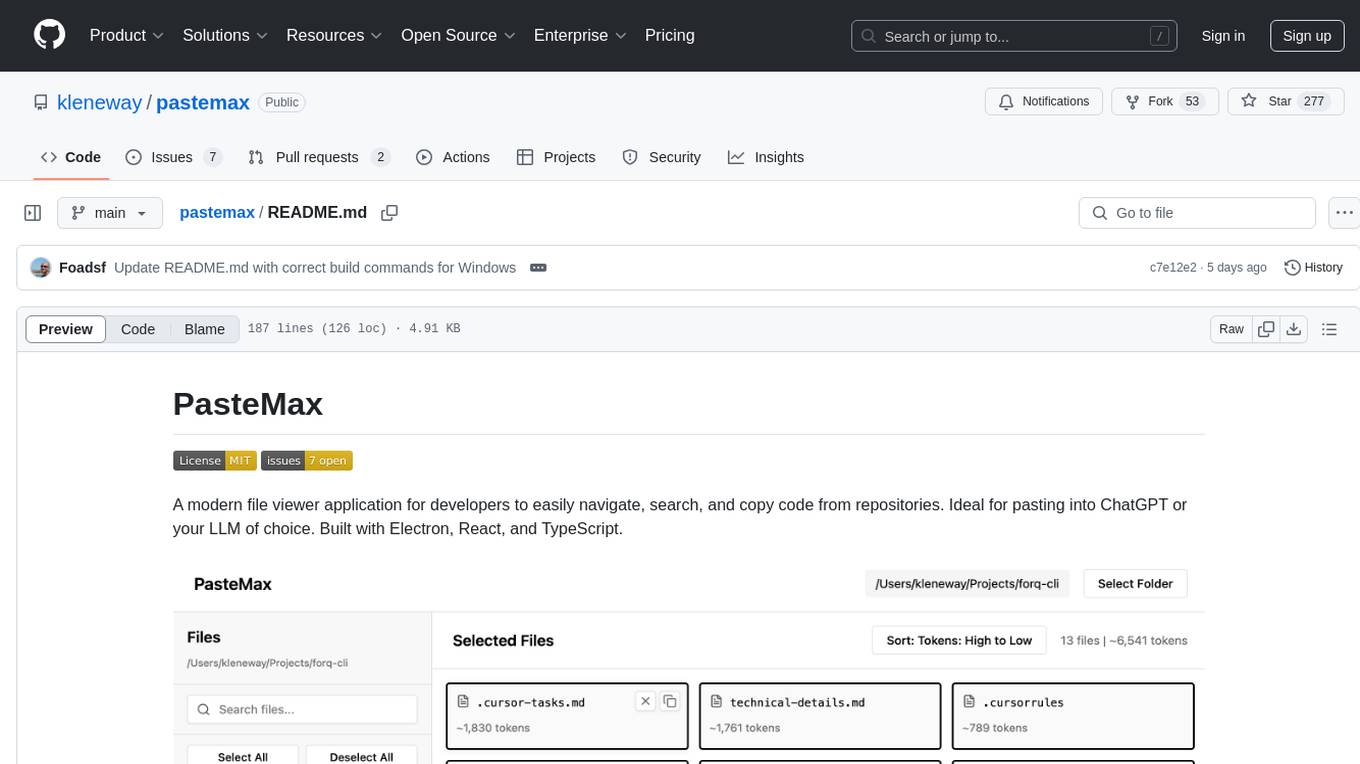
pastemax
PasteMax is a modern file viewer application designed for developers to easily navigate, search, and copy code from repositories. It provides features such as file tree navigation, token counting, search capabilities, selection management, sorting options, dark mode, binary file detection, and smart file exclusion. Built with Electron, React, and TypeScript, PasteMax is ideal for pasting code into ChatGPT or other language models. Users can download the application or build it from source, and customize file exclusions. Troubleshooting steps are provided for common issues, and contributions to the project are welcome under the MIT License.
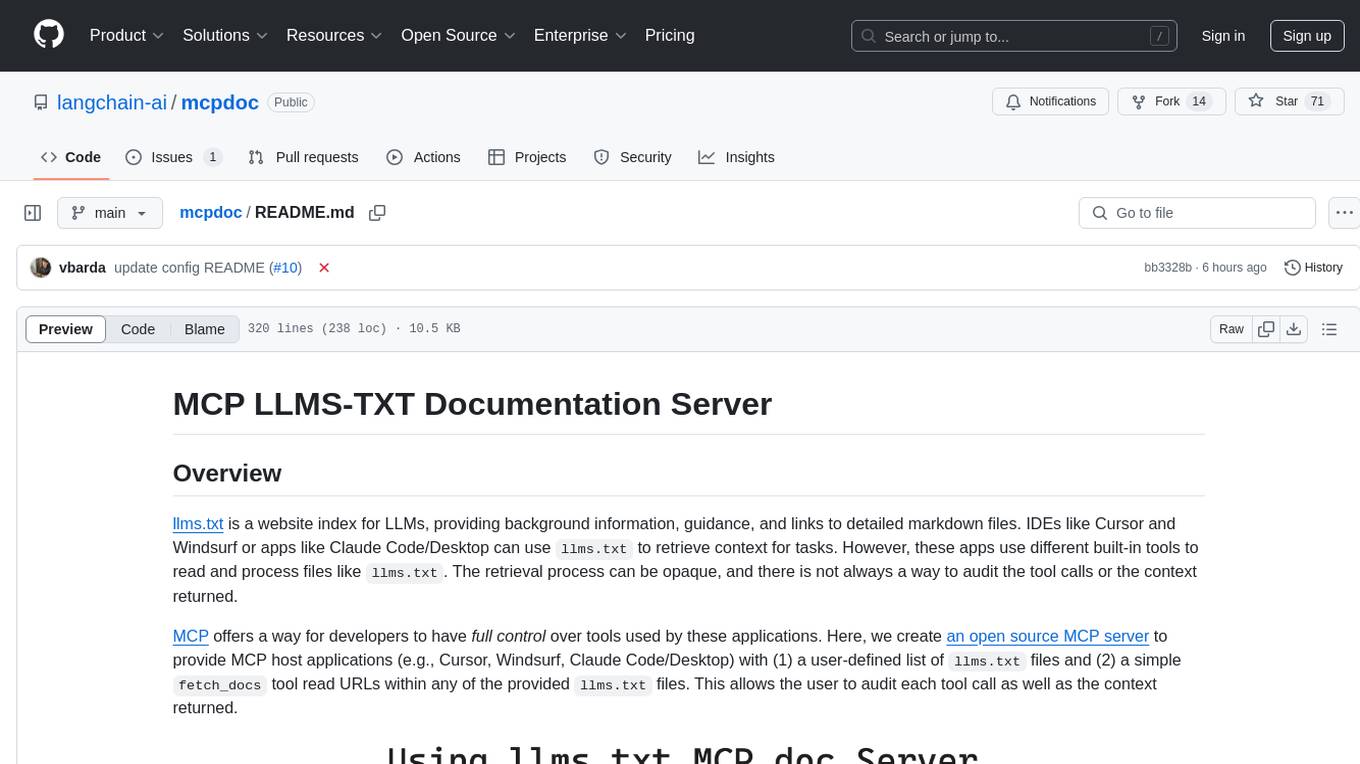
mcpdoc
The MCP LLMS-TXT Documentation Server is an open-source server that provides developers full control over tools used by applications like Cursor, Windsurf, and Claude Code/Desktop. It allows users to create a user-defined list of `llms.txt` files and use a `fetch_docs` tool to read URLs within these files, enabling auditing of tool calls and context returned. The server supports various applications and provides a way to connect to them, configure rules, and test tool calls for tasks related to documentation retrieval and processing.
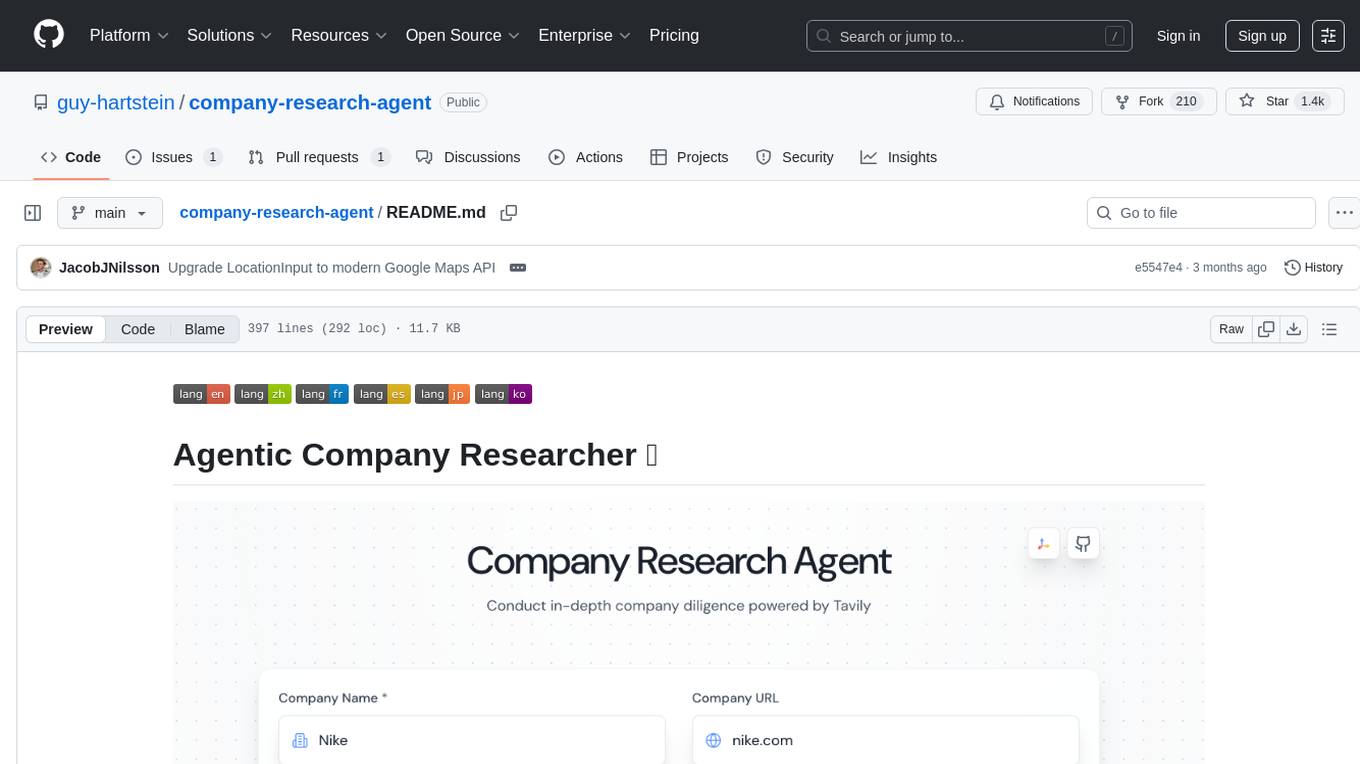
company-research-agent
Agentic Company Researcher is a multi-agent tool that generates comprehensive company research reports by utilizing a pipeline of AI agents to gather, curate, and synthesize information from various sources. It features multi-source research, AI-powered content filtering, real-time progress streaming, dual model architecture, modern React frontend, and modular architecture. The tool follows an agentic framework with specialized research and processing nodes, leverages separate models for content generation, uses a content curation system for relevance scoring and document processing, and implements a real-time communication system via WebSocket connections. Users can set up the tool quickly using the provided setup script or manually, and it can also be deployed using Docker and Docker Compose. The application can be used for local development and deployed to various cloud platforms like AWS Elastic Beanstalk, Docker, Heroku, and Google Cloud Run.
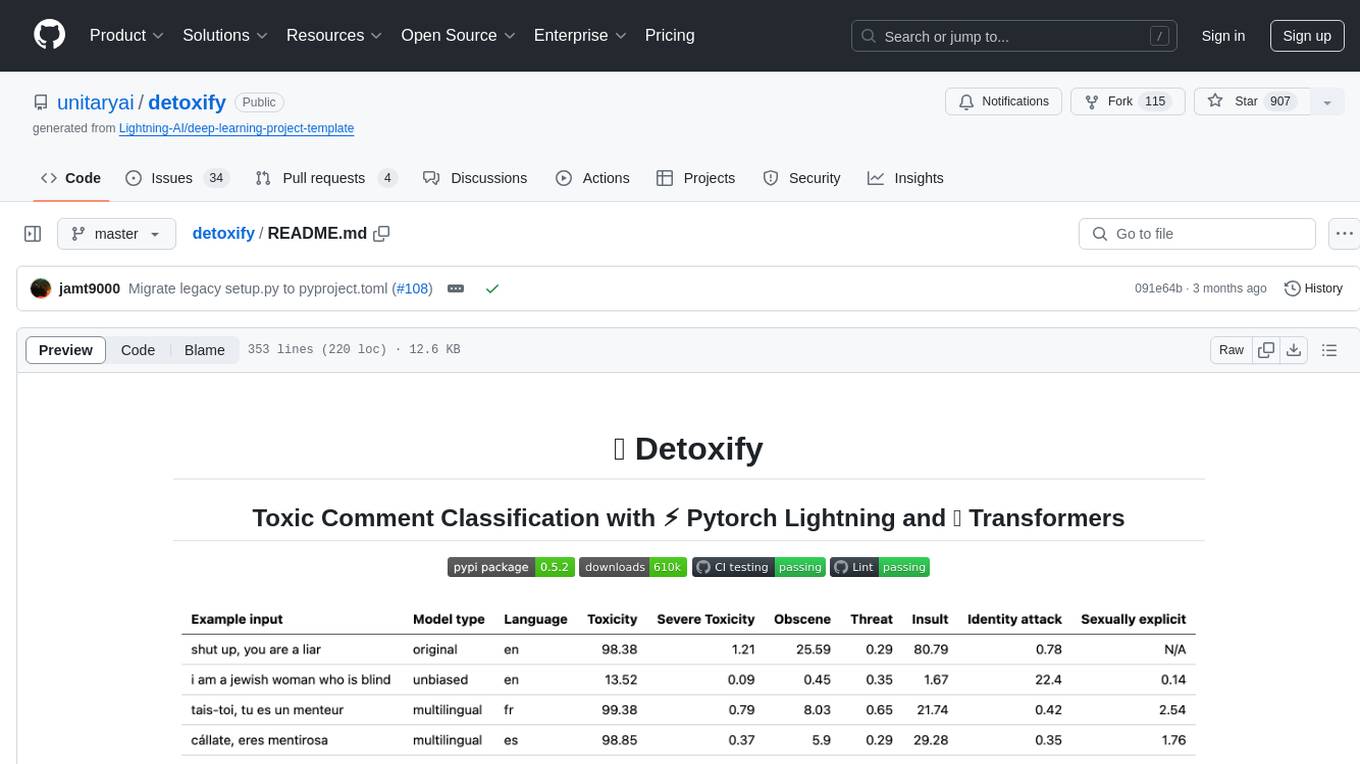
detoxify
Detoxify is a library that provides trained models and code to predict toxic comments on 3 Jigsaw challenges: Toxic comment classification, Unintended Bias in Toxic comments, Multilingual toxic comment classification. It includes models like 'original', 'unbiased', and 'multilingual' trained on different datasets to detect toxicity and minimize bias. The library aims to help in stopping harmful content online by interpreting visual content in context. Users can fine-tune the models on carefully constructed datasets for research purposes or to aid content moderators in flagging out harmful content quicker. The library is built to be user-friendly and straightforward to use.
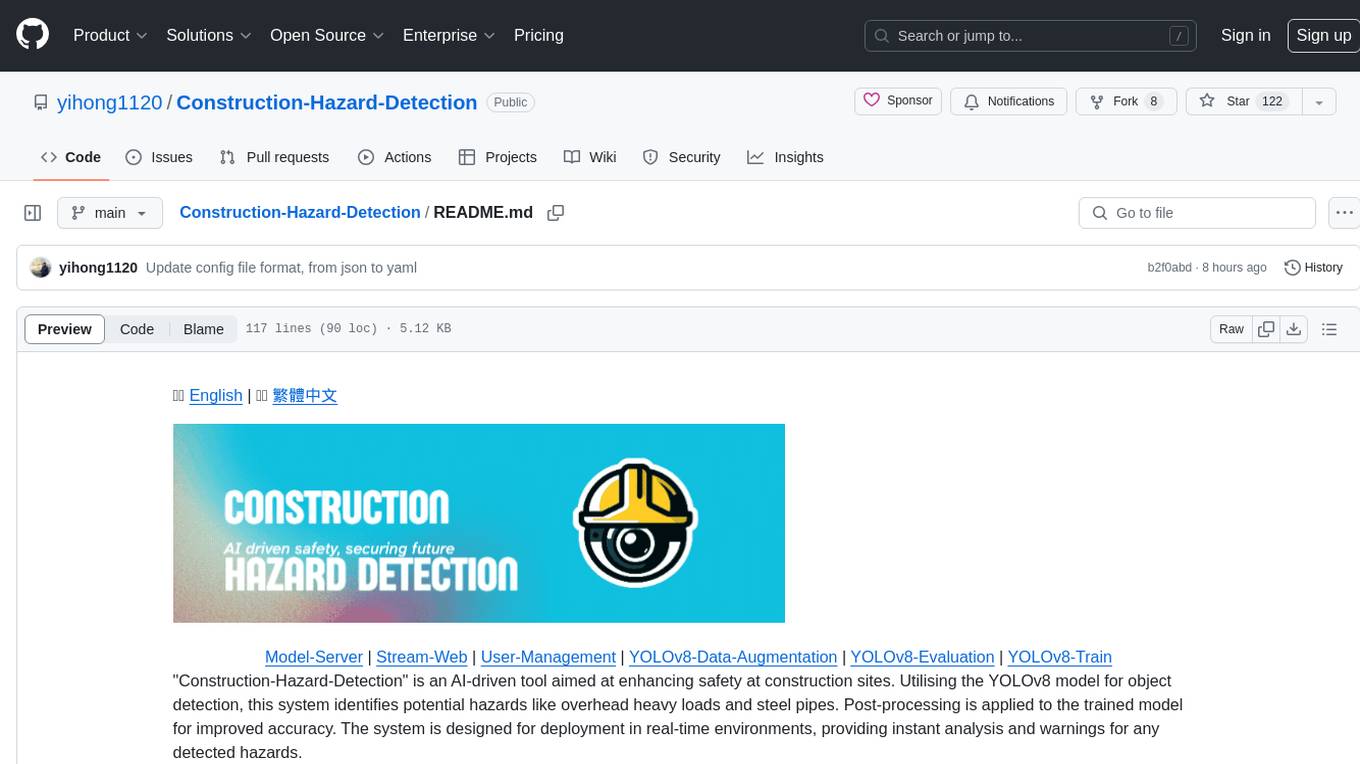
Construction-Hazard-Detection
Construction-Hazard-Detection is an AI-driven tool focused on improving safety at construction sites by utilizing the YOLOv8 model for object detection. The system identifies potential hazards like overhead heavy loads and steel pipes, providing real-time analysis and warnings. Users can configure the system via a YAML file and run it using Docker. The primary dataset used for training is the Construction Site Safety Image Dataset enriched with additional annotations. The system logs are accessible within the Docker container for debugging, and notifications are sent through the LINE messaging API when hazards are detected.
For similar tasks

model_baseline
This repository contains code for testing model baselines on ARC-AGI tasks. Users can test model baselines on ARC-AGI-1 and ARC-AGI-2 tasks, run single tasks, run tasks with concurrency, score submissions, and view historical results. Contributors can add more model adapters to the `src/adapters` folder. The repository also provides CLI usage for validation, uploading model outputs, bulk uploading, and Hugging Face integration for model submissions. Contributors can test new providers using the `test_providers.sh` script before submitting pull requests.

empirical
Empirical is a tool that allows you to test different LLMs, prompts, and other model configurations across all the scenarios that matter for your application. With Empirical, you can run your test datasets locally against off-the-shelf models, test your own custom models and RAG applications, view, compare, and analyze outputs on a web UI, score your outputs with scoring functions, and run tests on CI/CD.
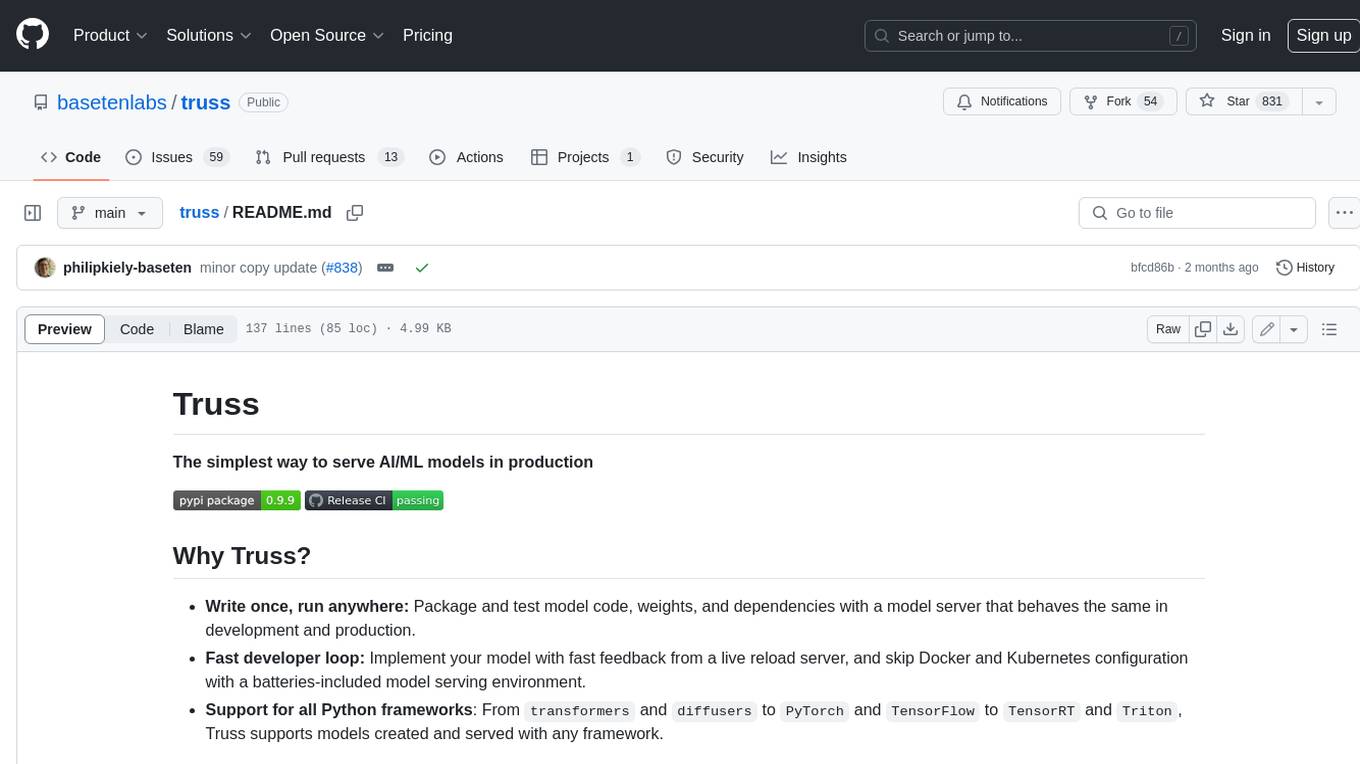
truss
Truss is a tool that simplifies the process of serving AI/ML models in production. It provides a consistent and easy-to-use interface for packaging, testing, and deploying models, regardless of the framework they were created with. Truss also includes a live reload server for fast feedback during development, and a batteries-included model serving environment that eliminates the need for Docker and Kubernetes configuration.
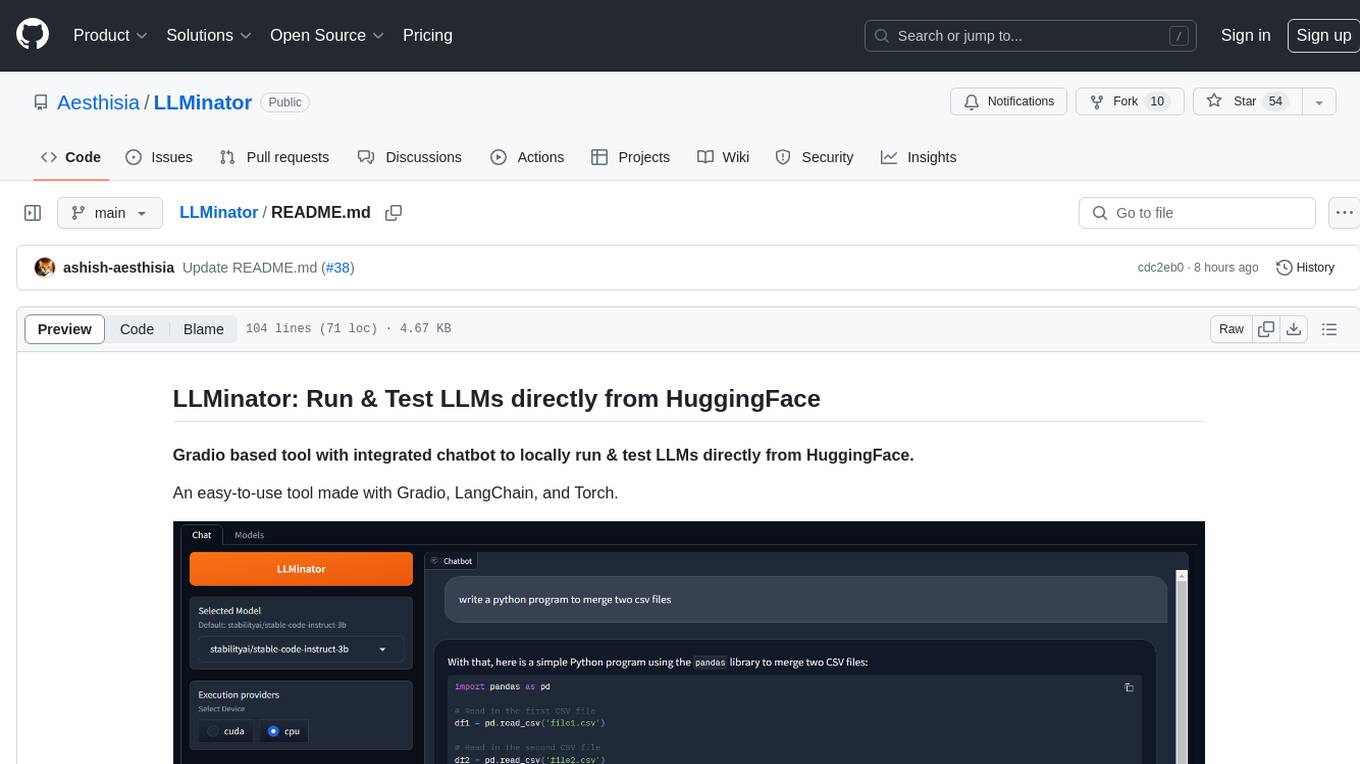
LLMinator
LLMinator is a Gradio-based tool with an integrated chatbot designed to locally run and test Language Model Models (LLMs) directly from HuggingFace. It provides an easy-to-use interface made with Gradio, LangChain, and Torch, offering features such as context-aware streaming chatbot, inbuilt code syntax highlighting, loading any LLM repo from HuggingFace, support for both CPU and CUDA modes, enabling LLM inference with llama.cpp, and model conversion capabilities.
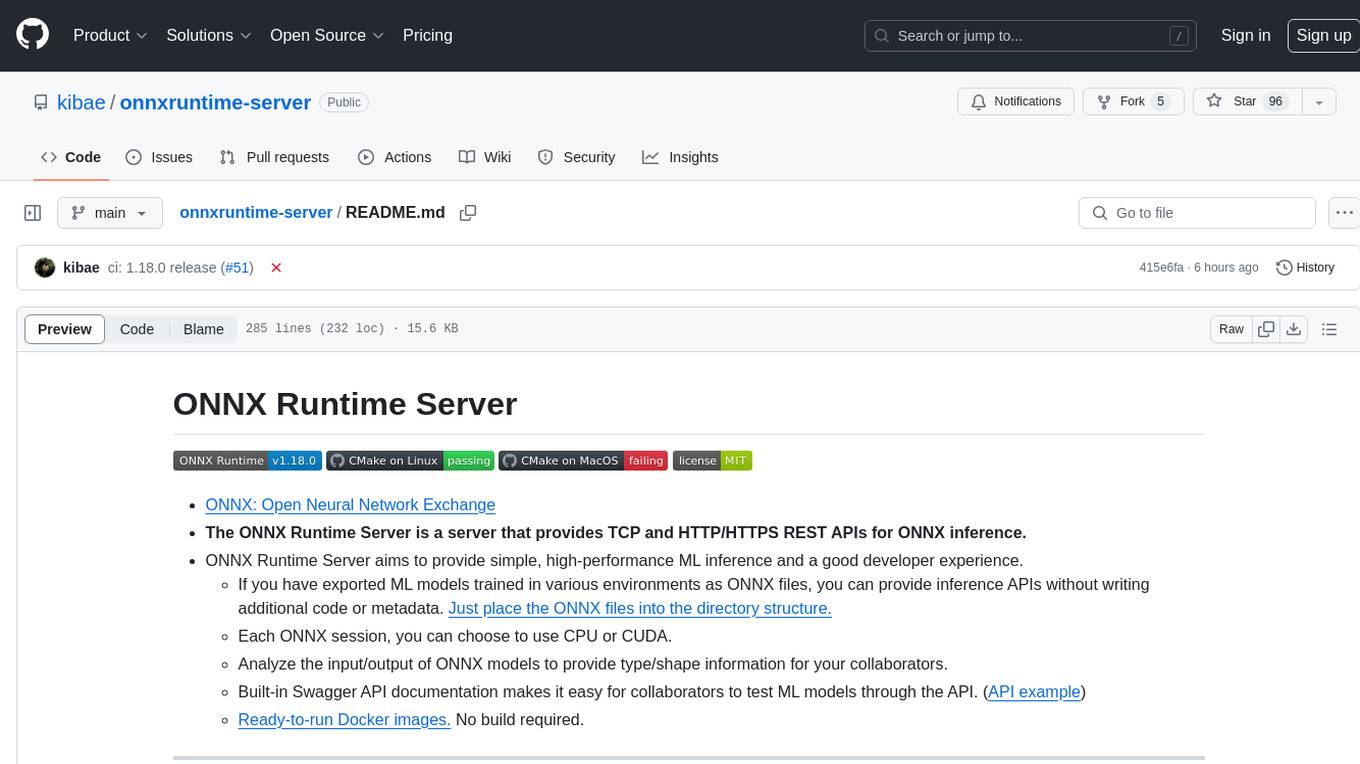
onnxruntime-server
ONNX Runtime Server is a server that provides TCP and HTTP/HTTPS REST APIs for ONNX inference. It aims to offer simple, high-performance ML inference and a good developer experience. Users can provide inference APIs for ONNX models without writing additional code by placing the models in the directory structure. Each session can choose between CPU or CUDA, analyze input/output, and provide Swagger API documentation for easy testing. Ready-to-run Docker images are available, making it convenient to deploy the server.
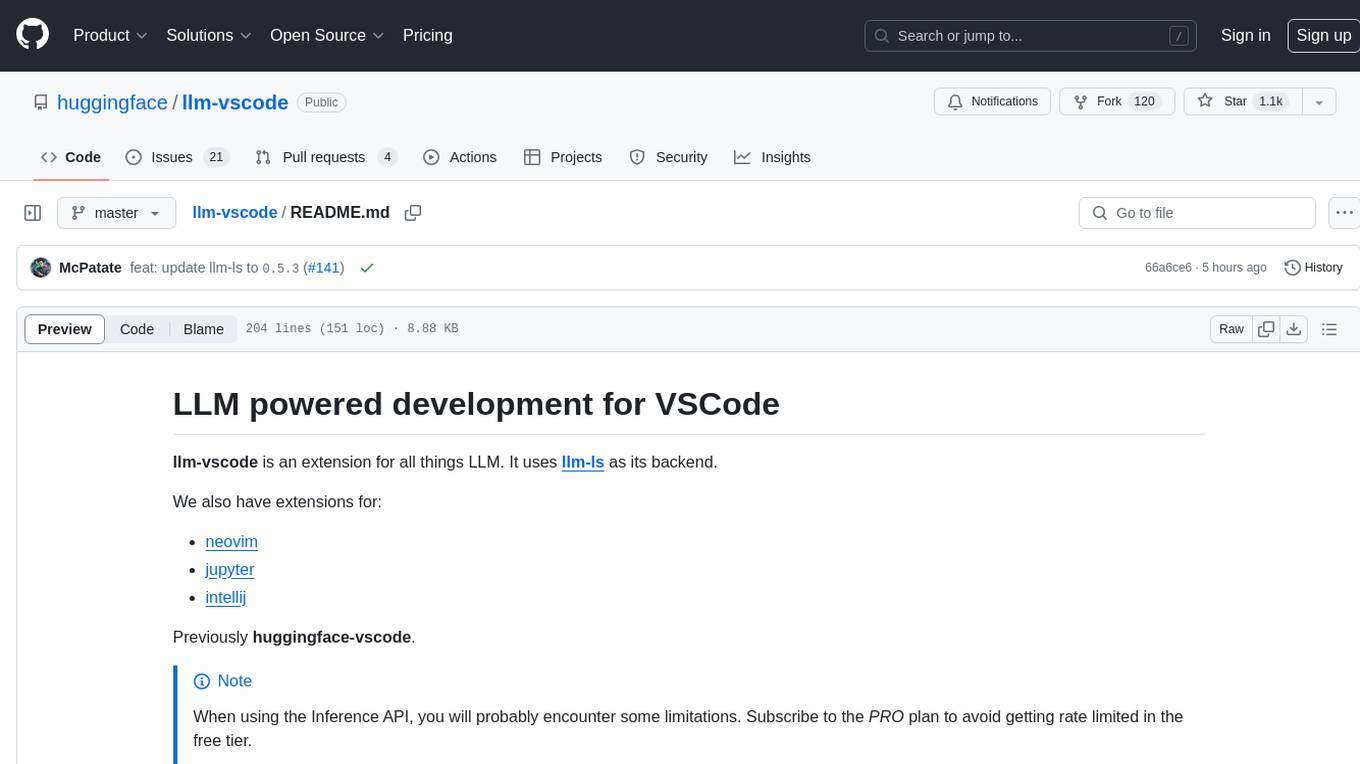
llm-vscode
llm-vscode is an extension designed for all things LLM, utilizing llm-ls as its backend. It offers features such as code completion with 'ghost-text' suggestions, the ability to choose models for code generation via HTTP requests, ensuring prompt size fits within the context window, and code attribution checks. Users can configure the backend, suggestion behavior, keybindings, llm-ls settings, and tokenization options. Additionally, the extension supports testing models like Code Llama 13B, Phind/Phind-CodeLlama-34B-v2, and WizardLM/WizardCoder-Python-34B-V1.0. Development involves cloning llm-ls, building it, and setting up the llm-vscode extension for use.
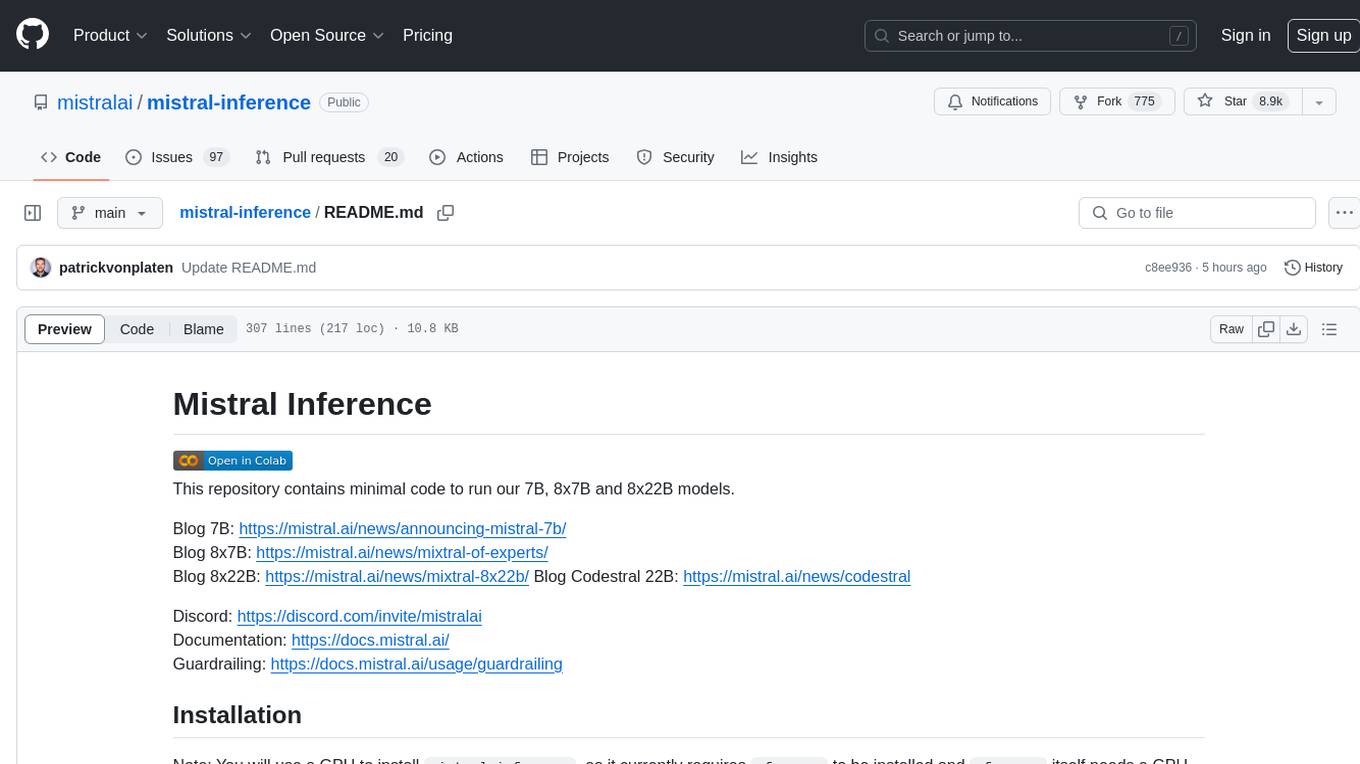
mistral-inference
Mistral Inference repository contains minimal code to run 7B, 8x7B, and 8x22B models. It provides model download links, installation instructions, and usage guidelines for running models via CLI or Python. The repository also includes information on guardrailing, model platforms, deployment, and references. Users can interact with models through commands like mistral-demo, mistral-chat, and mistral-common. Mistral AI models support function calling and chat interactions for tasks like testing models, chatting with models, and using Codestral as a coding assistant. The repository offers detailed documentation and links to blogs for further information.
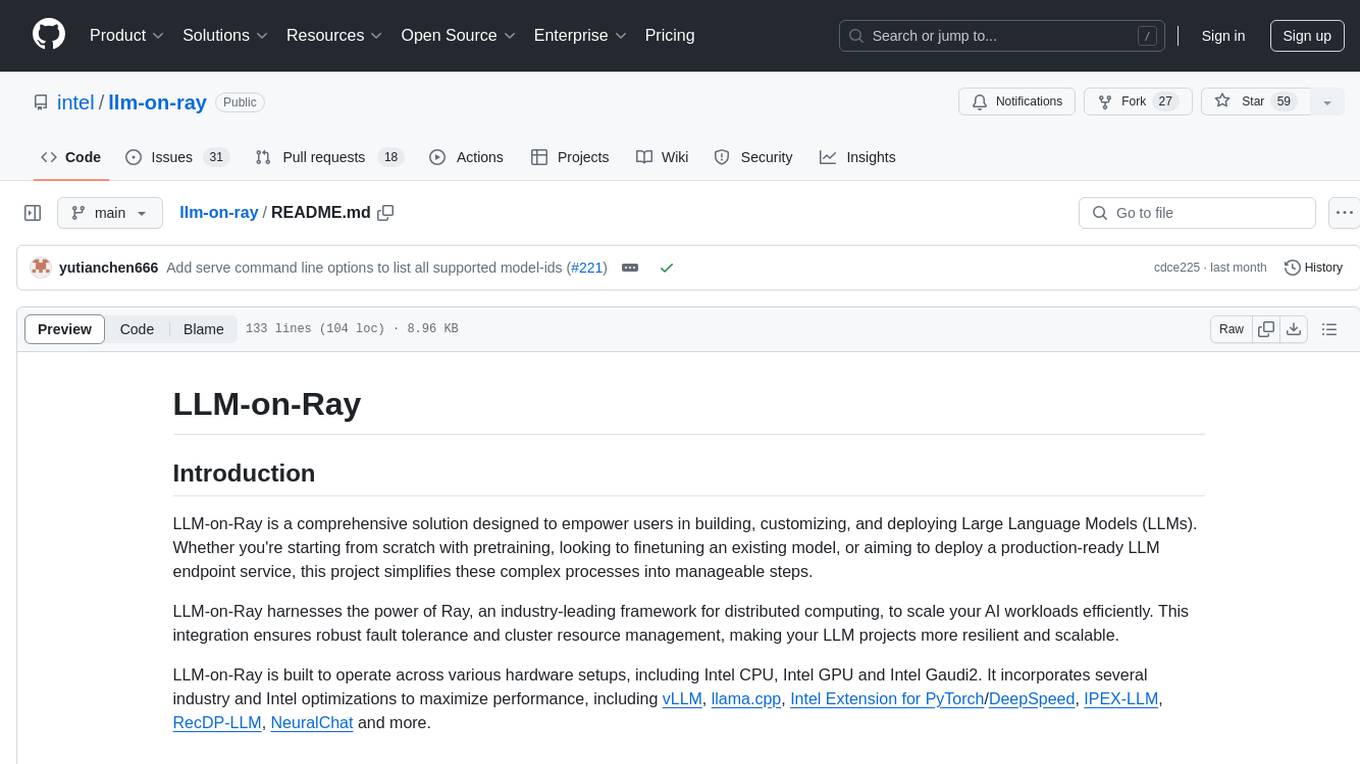
llm-on-ray
LLM-on-Ray is a comprehensive solution for building, customizing, and deploying Large Language Models (LLMs). It simplifies complex processes into manageable steps by leveraging the power of Ray for distributed computing. The tool supports pretraining, finetuning, and serving LLMs across various hardware setups, incorporating industry and Intel optimizations for performance. It offers modular workflows with intuitive configurations, robust fault tolerance, and scalability. Additionally, it provides an Interactive Web UI for enhanced usability, including a chatbot application for testing and refining models.
For similar jobs
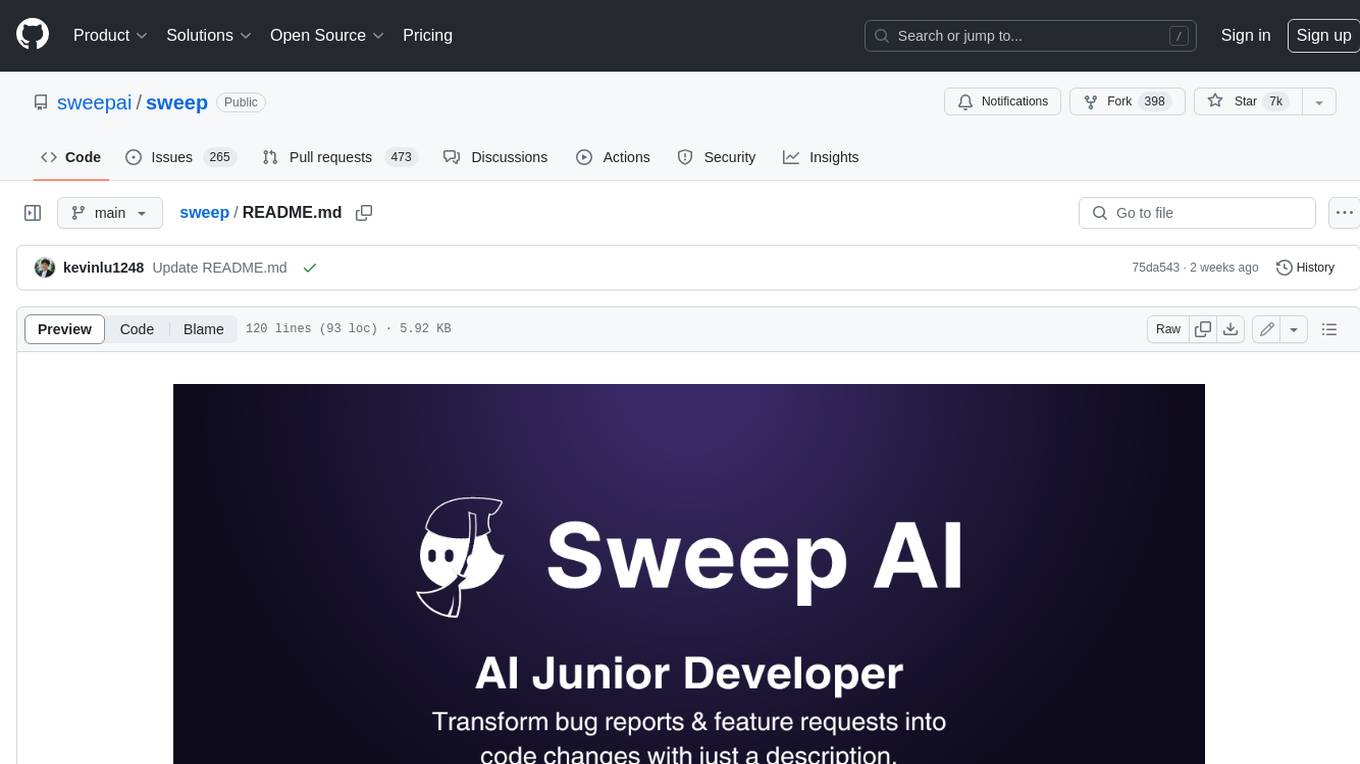
sweep
Sweep is an AI junior developer that turns bugs and feature requests into code changes. It automatically handles developer experience improvements like adding type hints and improving test coverage.
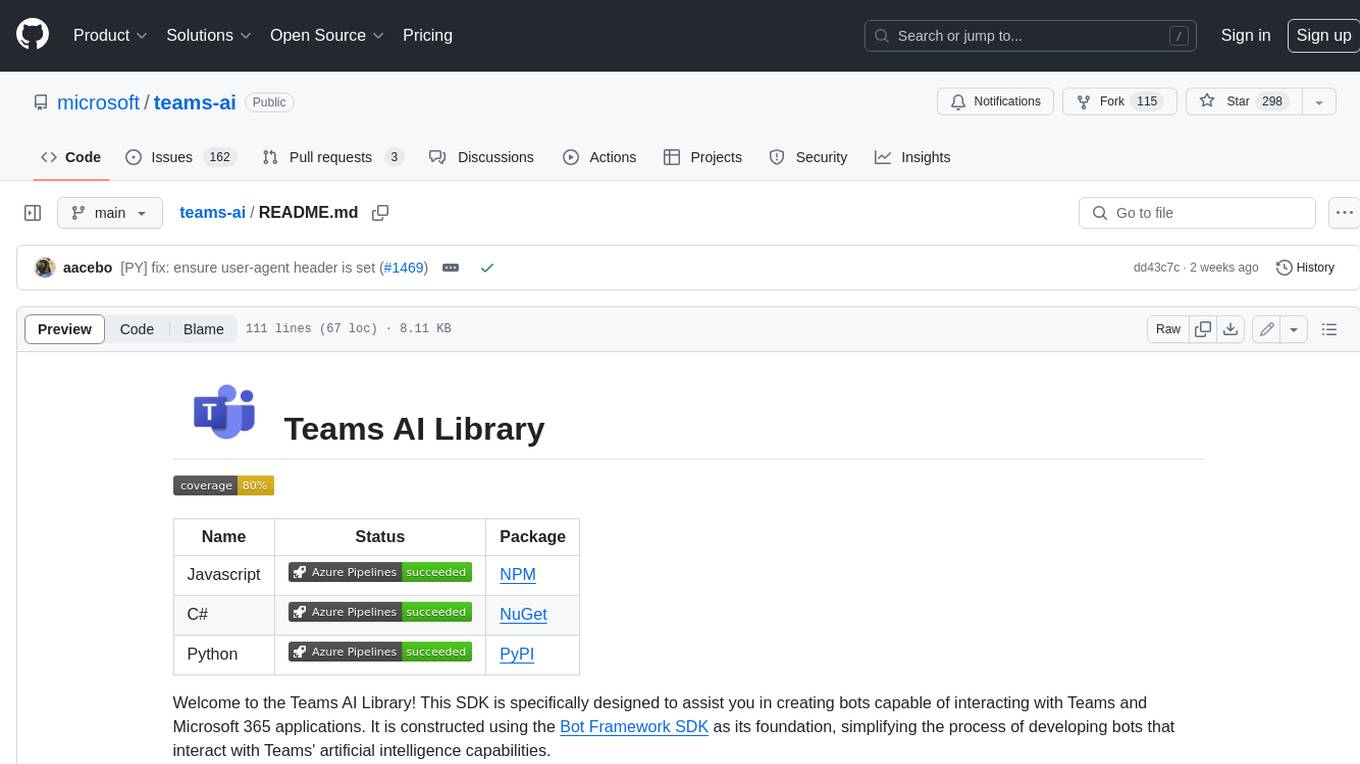
teams-ai
The Teams AI Library is a software development kit (SDK) that helps developers create bots that can interact with Teams and Microsoft 365 applications. It is built on top of the Bot Framework SDK and simplifies the process of developing bots that interact with Teams' artificial intelligence capabilities. The SDK is available for JavaScript/TypeScript, .NET, and Python.

ai-guide
This guide is dedicated to Large Language Models (LLMs) that you can run on your home computer. It assumes your PC is a lower-end, non-gaming setup.
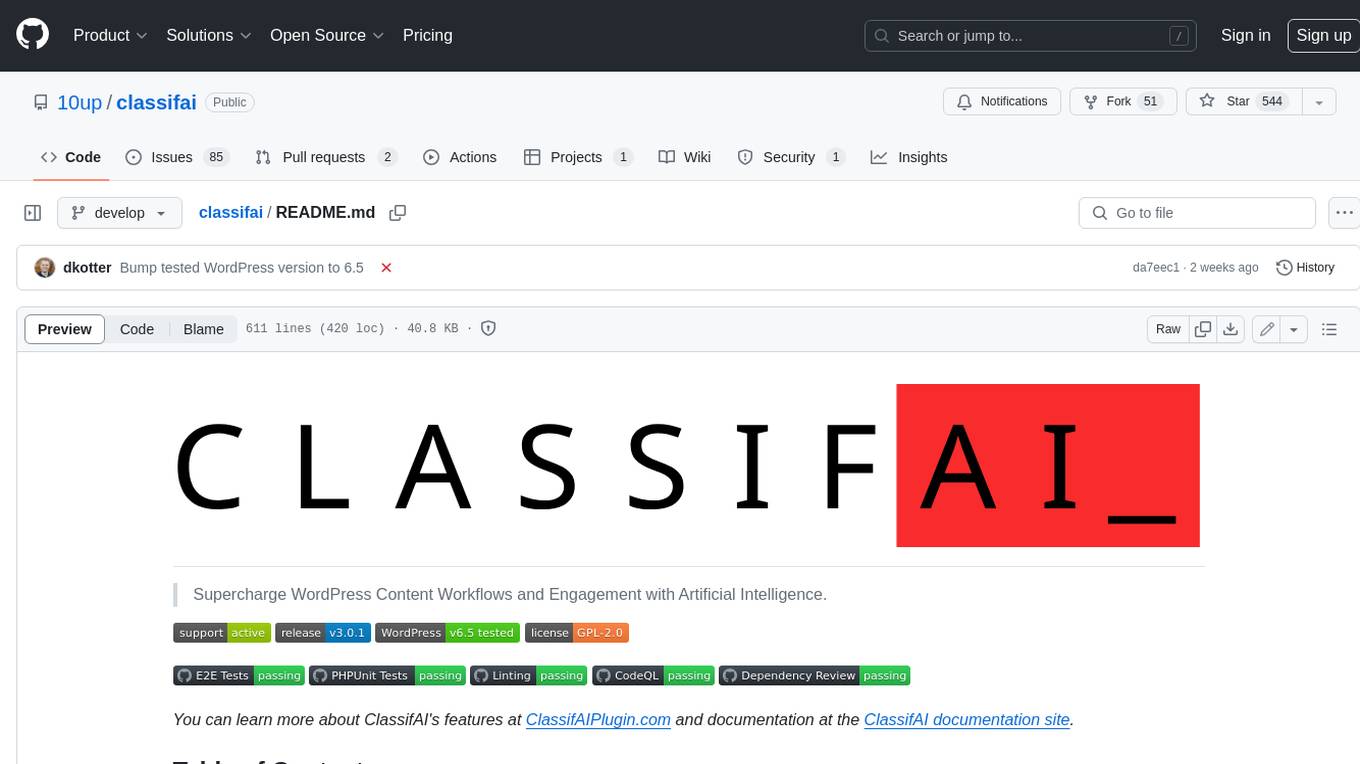
classifai
Supercharge WordPress Content Workflows and Engagement with Artificial Intelligence. Tap into leading cloud-based services like OpenAI, Microsoft Azure AI, Google Gemini and IBM Watson to augment your WordPress-powered websites. Publish content faster while improving SEO performance and increasing audience engagement. ClassifAI integrates Artificial Intelligence and Machine Learning technologies to lighten your workload and eliminate tedious tasks, giving you more time to create original content that matters.
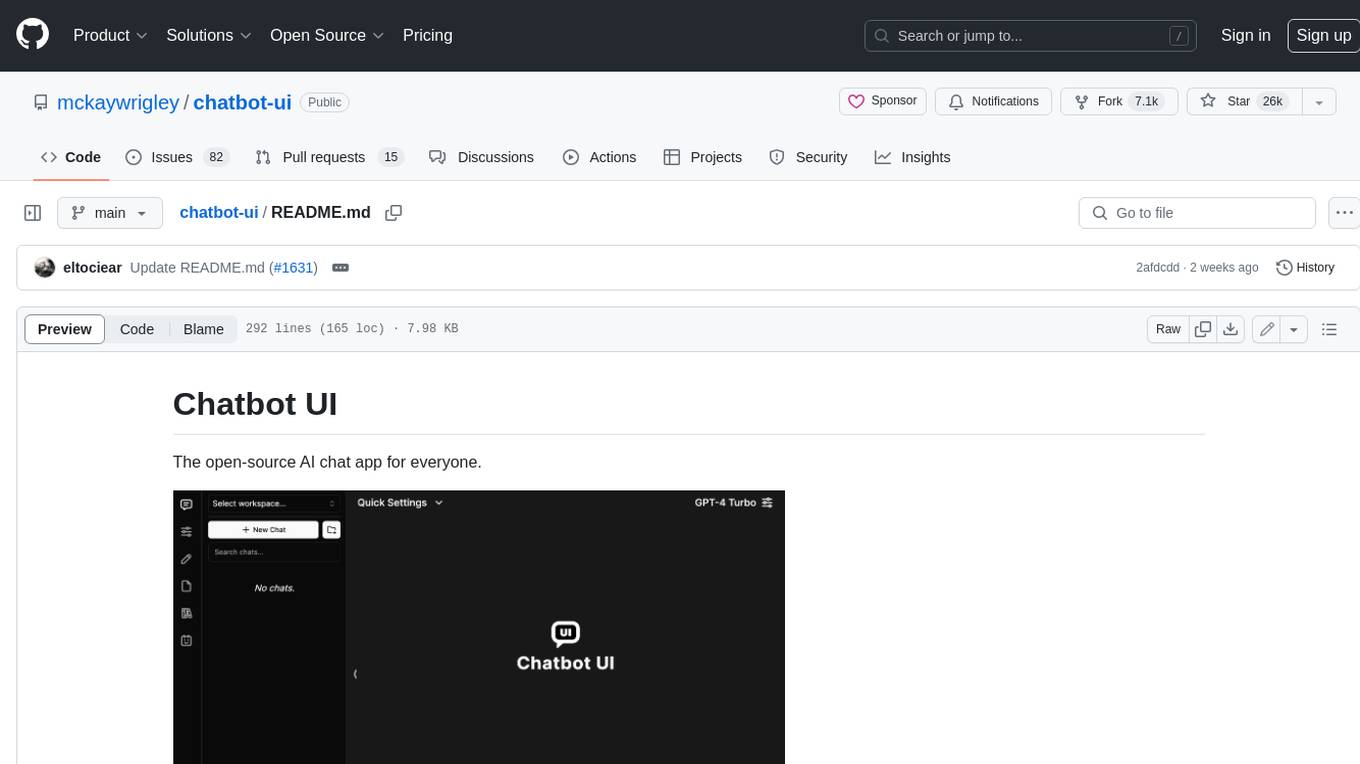
chatbot-ui
Chatbot UI is an open-source AI chat app that allows users to create and deploy their own AI chatbots. It is easy to use and can be customized to fit any need. Chatbot UI is perfect for businesses, developers, and anyone who wants to create a chatbot.
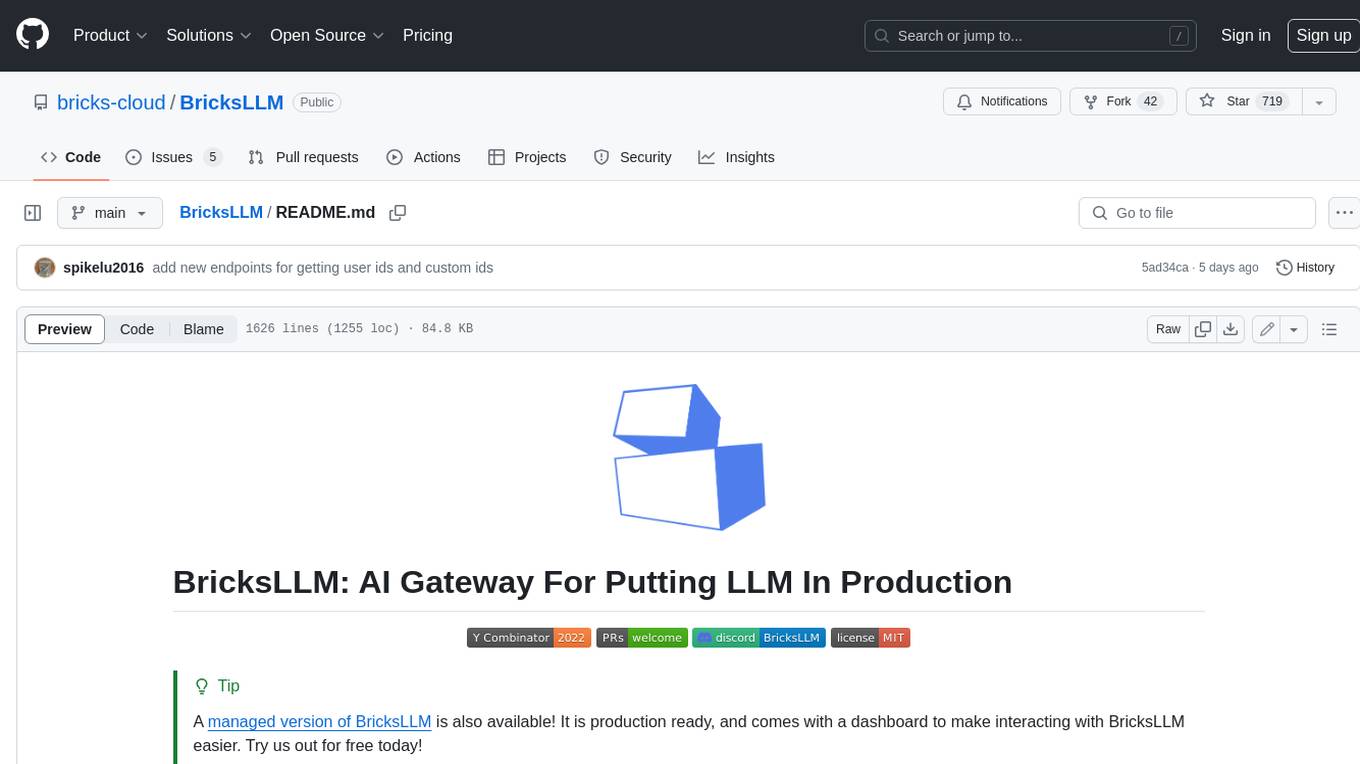
BricksLLM
BricksLLM is a cloud native AI gateway written in Go. Currently, it provides native support for OpenAI, Anthropic, Azure OpenAI and vLLM. BricksLLM aims to provide enterprise level infrastructure that can power any LLM production use cases. Here are some use cases for BricksLLM: * Set LLM usage limits for users on different pricing tiers * Track LLM usage on a per user and per organization basis * Block or redact requests containing PIIs * Improve LLM reliability with failovers, retries and caching * Distribute API keys with rate limits and cost limits for internal development/production use cases * Distribute API keys with rate limits and cost limits for students
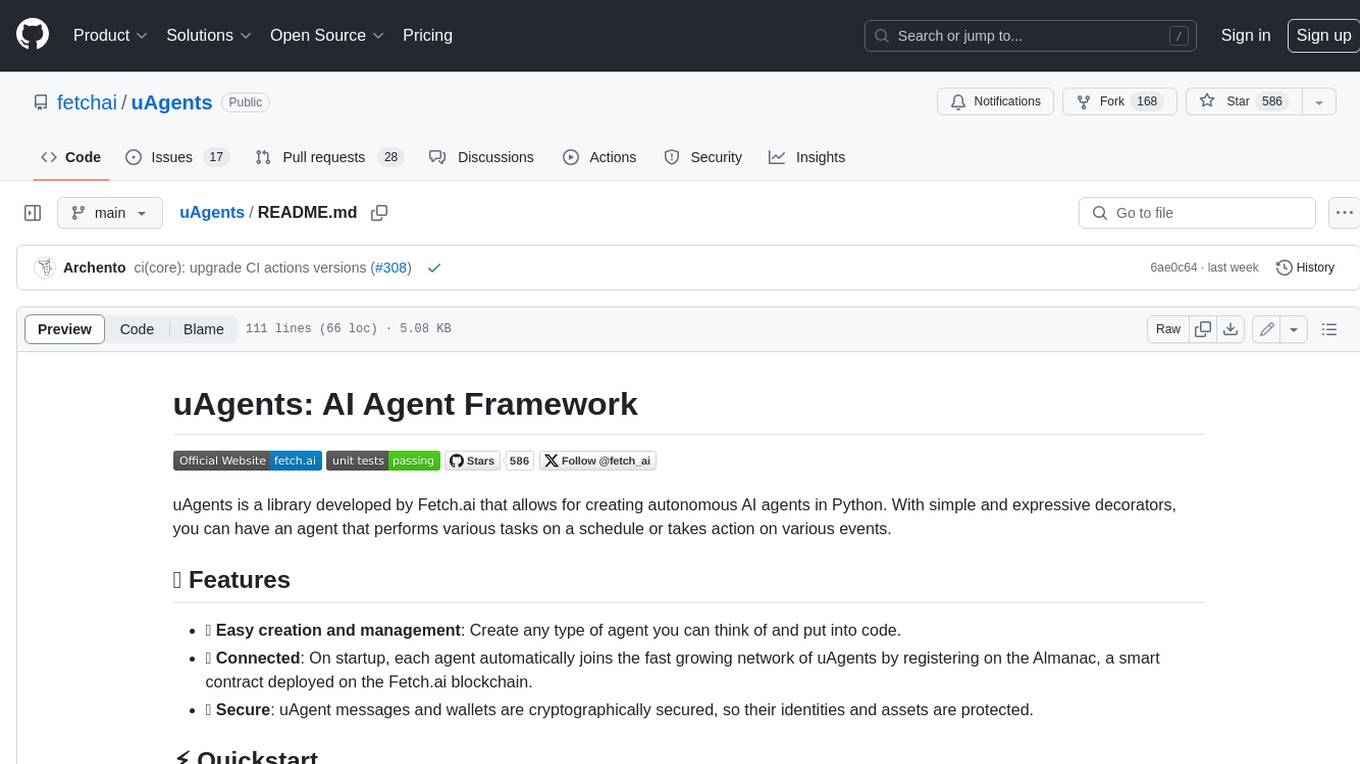
uAgents
uAgents is a Python library developed by Fetch.ai that allows for the creation of autonomous AI agents. These agents can perform various tasks on a schedule or take action on various events. uAgents are easy to create and manage, and they are connected to a fast-growing network of other uAgents. They are also secure, with cryptographically secured messages and wallets.

griptape
Griptape is a modular Python framework for building AI-powered applications that securely connect to your enterprise data and APIs. It offers developers the ability to maintain control and flexibility at every step. Griptape's core components include Structures (Agents, Pipelines, and Workflows), Tasks, Tools, Memory (Conversation Memory, Task Memory, and Meta Memory), Drivers (Prompt and Embedding Drivers, Vector Store Drivers, Image Generation Drivers, Image Query Drivers, SQL Drivers, Web Scraper Drivers, and Conversation Memory Drivers), Engines (Query Engines, Extraction Engines, Summary Engines, Image Generation Engines, and Image Query Engines), and additional components (Rulesets, Loaders, Artifacts, Chunkers, and Tokenizers). Griptape enables developers to create AI-powered applications with ease and efficiency.
